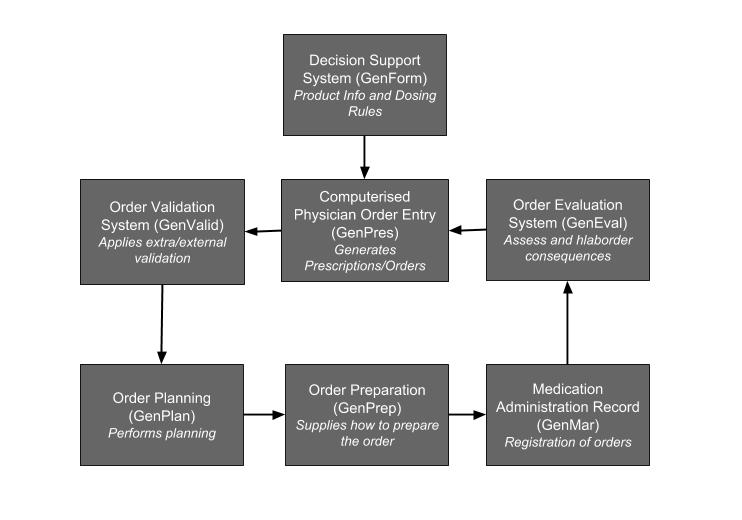The first hit you get when looking for the answer how ‘medical decision support’ is defined points to clinical decision support systems. The definition for wich is formulated as (attributed to Robert Hayward of the Centre for Health Evidence ):
Clinical decision support systems link health observations with health knowledge to influence health choices by clinicians for improved health care
The next logical step is to look at the topic of artificial intelligence in medicine.
However, in clinical practice there are more immediate and practical needs to have support for simpel calculation and lookup actions.
Broadly speaking decision support comes in two flavors:
- Decision support generated by inductive logic, i.e. learning from data. The generalization based on specific data is a core concept in AI.
- Decision support generated by deductive logic, i.e. coming to a conclusion by applying stated facts. This can be as simple as looking up a treatment by applying the rules in a protocol.
Specifically, in the setting of Neonatal and Pediatric Critical Care, one of the most glaring omissions in current medical software systems, is the lack of support to perform comprehensive drug and fluid calculations based on rules and protocols.
For example prescribing gentamicin for a premature neonate involves the following steps:
- Looking up the correct drug dose according to indication and patient characteristics.
- Calculating the dose according to the weight of the patient.
- Validating the prescription.
- Calculating the resulting fluid load given existing prescriptions and enteral and parenteral feeding.
- Planning the gentamicin administrations.
- Preparing a specific gentamicin dose infusion:
- This involves looking up the specific preparation instructions (i.e. concentration, how to dissolve the drug with which fluid, duration of the infusion, etc..)
- Calculation of the preparation (i.e. the quantity of drug and solvent).
- Administration of the drug.
- Evaluation of the effect
This whole complex process is described as the medication cycle and is can be depicted as

The involved complexity of this clinical work process and lack of, or opportunities to improve decision support is described in more detail in this blog post.
The first priorities in the development of decision support should be directed at providing safety and efficiency by making the safe pathway the most efficient pathway. In essence this is already implemented in medicine by the development of guidelines and protocols. Making the desired clinical pathway or a protocol safe and efficient is a missing link in the current decision support provided by medical software systems.
Once this is established more inductive decision support can supplement rule based decision support to be able to personalize and if necessary deviate from existing protocols and medical rules.
